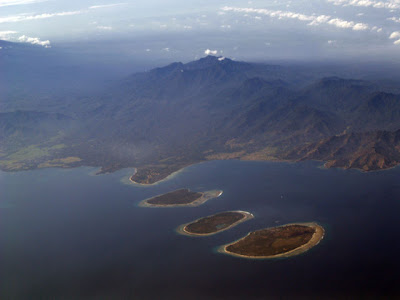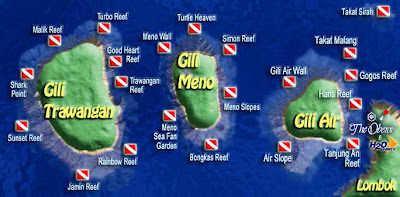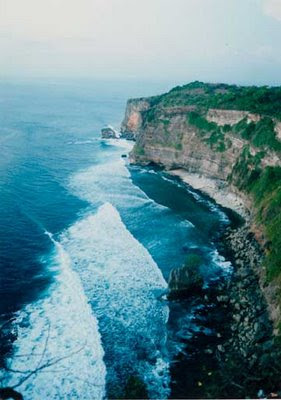Of the many factors that have contributed to the remarkable flourishing of dance and drama on the island of Bali for more than a millennium, three are of particular note. First, Bali remained isolated from both Islam and the West. Second, there was a merging of folk and court performance styles into a single communal tradition appreciated by all. Third, dances and plays are indissolubly linked to the recurring cycles of local festivals and rituals whereby the well-being of the community is maintained against constantly threatening malicious forces in the spirit world. From the verve and brilliance of Balinese performances it is clear not only that the people like to perform but also that there exists some culturally determined compulsion to do so.
Balinese dance and dramatic forms are so numerous that only a few can be noted. Balinese villagers playing in the barong exorcism dance-drama are not merely actors exercising theatrical skills. The actors' bodies, going into a trance, are believed to receive the spirits of Rangda and the Barong, and it is the spirits themselves that do battle. Thus the performance is actually more a ritual than a piece of theatre. The sanghyang dance is usually performed by two young girls who gradually go into a state of trance as women sing in chorus and incense is wafted about them. Supposedly entered by the spirit of the nymph Supraba, the girls rise and dance, often acrobatically, though they have been chosen from among girls untrained in dance. The dance's purpose is to entice Supraba to the village to gain her blessing when evil forces threaten. In the ketjak, or monkey dance, as many as 150 village men, sitting in concentric circles around a flaming lamp, chant and gesticulate in unison until, in trance, they appear to have become ecstatically possessed by the spirits of monkeys. This performance, however, has no ritual function of altering an earthly condition.

That the Balinese wayang kulit may represent the older style of wayang, known on Java before the coming of Islam, is suggested by the less stylized shape of the puppets, by the shorter performing time of four to five hours, and by the simple music of only four gender, a bronze instrument similar to a xylophone with resonance chambers underneath, from the gamelan ensemble. In one type of shadow play having a special religious significance, the puppets perform before a screen during the daytime, and the puppeteer is seen in his role as a Brahman priest, bare to the waist. In the redjang processional dance, village women symbolically offer their bodies to their temple gods.
Balinese dance and dramatic forms are so numerous that only a few can be noted. Balinese villagers playing in the barong exorcism dance-drama are not merely actors exercising theatrical skills. The actors' bodies, going into a trance, are believed to receive the spirits of Rangda and the Barong, and it is the spirits themselves that do battle. Thus the performance is actually more a ritual than a piece of theatre. The sanghyang dance is usually performed by two young girls who gradually go into a state of trance as women sing in chorus and incense is wafted about them. Supposedly entered by the spirit of the nymph Supraba, the girls rise and dance, often acrobatically, though they have been chosen from among girls untrained in dance. The dance's purpose is to entice Supraba to the village to gain her blessing when evil forces threaten. In the ketjak, or monkey dance, as many as 150 village men, sitting in concentric circles around a flaming lamp, chant and gesticulate in unison until, in trance, they appear to have become ecstatically possessed by the spirits of monkeys. This performance, however, has no ritual function of altering an earthly condition.

That the Balinese wayang kulit may represent the older style of wayang, known on Java before the coming of Islam, is suggested by the less stylized shape of the puppets, by the shorter performing time of four to five hours, and by the simple music of only four gender, a bronze instrument similar to a xylophone with resonance chambers underneath, from the gamelan ensemble. In one type of shadow play having a special religious significance, the puppets perform before a screen during the daytime, and the puppeteer is seen in his role as a Brahman priest, bare to the waist. In the redjang processional dance, village women symbolically offer their bodies to their temple gods.
Because Balinese performing arts are vitally alive, they change from decade to decade, even from year to year. The gambuh, respected for its age, contains elements of dramatic dance, song, narrative, and characterization found in later forms. It is thought dull, however, and is seldom performed, though it is believed to have provided the model for the singing style of popular ardja opera troupes and the dance style of the lovely girls' legong. Wayang wong is analogous to the Javanese wayang orang, but masks are worn and the repertory is limited to Rama plays. Pandawa plays are staged in identical style but are called parwa. It has been suggested that these forms also stem, at least in part, from gambuh. Wayang topeng masked-dance plays are ancient, being mentioned in a palm-leaf document of 1058. The Javanese chronicle of the Majapahit period (c. 1293-1520), the Pararaton, in which Ken Angrok is the hero, is a favourite tapeng story. This points to the strong influence exerted by Javanese on Balinese arts after the Majapahit court was transferred to Bali in the 16th century to escape Islamic domination.



 There is now a new Fast Boat service running direct to the Gili Islands Lombok from Benoa Harbour in South
There is now a new Fast Boat service running direct to the Gili Islands Lombok from Benoa Harbour in South 






